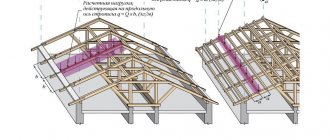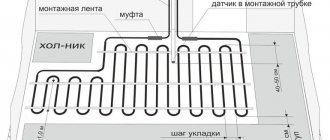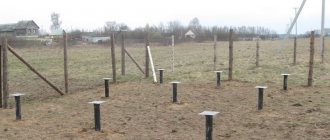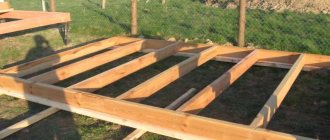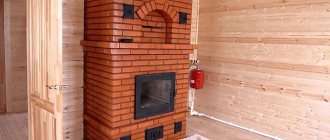Frame houses are most often built using a pile-screw foundation. This technology saves time on foundation installation and does not require excavation work. What should be the distance between screw piles for a frame house? What subtleties do you need to know before starting work? Let's try to figure it out.
Features of a pile foundation
This type of foundation is not suitable for the construction of buildings made of heavy materials (brick, concrete, etc.). It is intended exclusively for the construction of light structures, such as frames.
The design is easy to install. The work is carried out according to the following algorithm:
- Selection and cleaning of the site. Trees, bushes and grass are removed. There should be no communications in the work area.
- Marking the territory. This is necessary for the most accurate installation of piles. The marking is carried out according to a pre-prepared project, where the location of each support is indicated in detail. The maximum permissible deviation from the design is 2 cm.
- Installation of piles. According to the markings, a small recess is made for each pile - 15-20 cm, so that the support is easier to install. We install the pile and screw it in.
- Installation of piles is painstaking work. To do this you need to involve 3-4 people. First of all, the support needs to be assembled: in the upper part of the piles there is a special hole into which a crowbar (3 cm in diameter) is inserted. A lever is then mounted on it - it helps to simplify the process of screwing in the support.
- A pipe 3-3.5 m long is used as a lever. The longer the lever, the easier the support rotates. In addition, it is important that the piles enter the ground smoothly. For this, a building level is used, which is applied to the post while screwing.
- Next, we place the support in the prepared recess and begin to screw it in. To do this, two people grab the lever on both sides of the support and move in a direction against the axis. In one full rotation, the pile plunges into the ground approximately 20 cm.
Important! If the pile enters the ground unevenly, it must be leveled.
Therefore, the level of entry should be monitored throughout the entire process. It is important to remember that the deeper the support is immersed in the ground, the more difficult it is to level.
It happens that the “first” steps are difficult, and the screw does not want to turn. In such cases, the recess for support increases by 10-15 cm, and some kind of weight is hung on the levers as an additional vertical load. When the support rotates easily, the load can be removed.
Briefly about the main thing
The calculation of all foundation parameters must be as accurate and competent as possible; the durability and reliability of the building depends on it. Only a specialist involved in design can perform it correctly, since this requires a variety of data, from the composition of the soil to the load on it. A pile foundation is no exception, especially when it comes to the step at which to install supports under a brick or stone house. It is a little easier to determine the distance between screw piles for a terrace or frame structure: they are relatively light in weight, so any convenient step within 1.5-3 meters can be applied to them.
Ratings 0
Working with piles
After installation of screw piles, additional work is carried out. First of all, you should make sure that all supports are installed level. There should be at least 60 cm from the ground to the zero level of the house. We align all the piles so that they are in the same plane. For this you can use a grinder.
Next, the supports are concreted to give them strength. This will eliminate the possibility of tilting and deformation of the future foundation. It is also necessary to expel air from the cavities so that the foundation does not collapse in the future.
The mixture is poured into the internal void of the pile, it is also necessary to lay reinforcement, this will give the structure reliability. For this, a cement-sand mixture is prepared. Its consumption is 35 kg per 1 pile.
The final stage of mounting the supports is to weld the ends. After this, timber tying is performed. If you use a channel instead of a beam, then you can do without the heads. This will help you save a lot.
Working with a pile-screw foundation excludes the following actions:
- Adjusting the piles to the same level during screwing. This work is carried out after the installation of all supports is completed, otherwise it may provoke subsidence of the foundation in the future;
- Lengthening unevenly screwed in piles;
- Installation of supports less than 1.5 m into the ground;
- Creating preparatory holes for supports in the ground deeper than 50 cm;
It is impossible to install supports with damaged coating. This will lead to corrosion and destruction of the piles.
Type of piles
The supports are distinguished by the method of deepening into the ground:
- Screw - a pipe with a diameter of 70 - 350 mm and a length of 2 - 11 m with a screw cone-shaped end;
Foundation design on screw piles
- Driven ones - length up to 16 meters; to increase the length, joining of several pieces is possible;
- Drilling rigs are installed in a drilled well.
According to the material:
- Reinforced concrete – reinforcement + concrete;
- Steel – grade not lower than ST-3;
- Tree.
Wooden ones are made from larch or oak.
Determination of soil bearing capacity
To install a pile-screw foundation, you need to know about the bearing capacity of the soil. The design of the house, including the foundation, is created on the basis of this data. Finding out the structure is not difficult; to do this, you can look on the Internet or ask your neighbors.
Even after finding out this information, it is better to check the soil on the site yourself. To do this, you need to take an old fishing drill and drill a hole in the far corner of the area. This will help to clearly see the condition of the soil: its moisture content, the depth of the horizons, etc.
To check, it is recommended to drill a hole below the expected immersion level of the piles. This will help you become familiar with the qualities of the lower soil horizons, which play the main role in fixing the supports.
How to choose the right step?
The distance between adjacent power elements is calculated based on the number of piles, as well as their diameters. To do this, first determine the design loads and analyze the design features.
In the case of a single and strip arrangement, the perimeter of the building is taken as a basis and divided by the number of piles . The result is compared with the minimum and maximum permissible parameters and, if necessary, the step is selected.
Errors in calculating the distance between supporting elements will lead to cost overruns, or to the risk of wall subsidence if the bearing capacity of the foundation in places with maximum load is insufficient.
Placement of supports in plan
Correct placement of piles is necessary to maintain the integrity of the frame house and avoid subsidence. This is especially true for complex projects: projects of two-story houses, a building with irregularly shaped walls, etc. The main rule: the load must be distributed evenly.
The location of house supports is of four types:
- Single. The piles are located at an equal distance from one another at the corners of the building, under the load-bearing walls, and under the vertical posts of the frame;
- Tape. This type of pile-screw foundation can withstand higher loads. The supports are located as with a single type of foundation, only the step between them is shortened;
- Bush. This implies a chaotic placement of supports under the foundation of the house. They are mounted in clusters, with most piles located in areas with the highest load (for example, under a room with heavy equipment). Under such conditions, the step between the supports does not matter, the main thing is that they are along the entire perimeter of the slab;
- Continuous (in other words, pile field). This type of foundation is relevant for areas with unstable ground cover and for heavy frame buildings. The piles are arranged in a grid around the entire perimeter of the building. The maximum step is 1 m.
Important! The most common types of pile-screw foundations are strip and single. They are provided for in the designs of private houses and small buildings.
Optimal value
It is very difficult to clearly indicate the optimal distance between adjacent piles of a screw foundation. It is necessary to take into account a lot of specific factors specific only to a given site, building and other conditions of construction and operation.
However, there are certain limits that limit the minimum and maximum pitch between screw supports. Logically, the optimal distance should be the average value, but in reality the situation looks somewhat different.
Based on the results of experiments and practical tests, it was found that the optimal distance is 2 m . This value is suitable for almost all types and sizes of piles used in individual construction.
The optimal value should not be used as some kind of universal number that is suitable in any case. Each project must be calculated individually.
Calculation features
Calculating the correct distance between the supports is important for the following reasons: if the supports are too far apart, the building may settle; a small distance between the piles will significantly increase the financial costs of construction. Professional builders recommend taking into account when making calculations:
- Weight of the frame structure as a whole;
- A lot of furniture, equipment, communication systems;
- Safety factor;
- Properties of the piles themselves;
- Load from wind and snow;
- Soil stability.
The calculation also takes into account such indicators as:
- Payload. It is determined by the provisions of SNiP (building codes and regulations);
- Snow load. It is individual for each region, so you need to find it specifically for your area;
- The standard safety factor is always used - 1.1-1.25.
As soon as the calculations are carried out, it is necessary to record the obtained data. For this, a diagram is drawn. It clearly indicates the location of each individual pile on the foundation plan. This will simplify the distribution of supports directly during work. Whatever the result of the calculations, the columns must be located at the corners of the building, in the area where the load-bearing structures meet. The remaining supports are placed under the floor joists of the future house; they need to be distributed evenly.
What information should you collect first?
Selection of piles for the foundation, taking into account influencing factors
- Obtain detailed information about the condition of soils, the height of water horizons and the degree of mobility of individual layers.
- Develop a project for the future house, taking into account the building materials used, and additionally allow for errors in furniture and other materials.
- Calculate how much weight of all building materials is needed to build a house.
- Determine the depth of strong rock layers and the degree of their heaving.
- Select the optimal type of piles and grillage characteristics.
- Calculate the permissible load per unit area of soil, as well as the permissible number of load-bearing structures.
As a rule, the design of such foundations involves collecting all the information about the future building and construction site. These are complex engineering calculations that should be done by a professional builder with experience in this field.
Also, given the open area between the house and the ground, the tilt of the structure under the influence of wind is inevitable, and it must be taken into account.
When calculating such foundations, it is also sometimes taken into account how much and what kind of waterproofing materials are needed to protect the foundation. The design and calculation of this foundation consists of several key stages:
- selection of the optimal diameter of the piles used;
- calculation of the maximum permissible length of the structure;
- calculation of the minimum amount of materials on which the grillage will be located;
- calculation of the bearing capacity of bored piles as an alternative to factory ones;
- calculation and selection of grillage.
At the design stage, you need to immediately decide what type of structure will be used. After all, the maximum possible number of structures, their permissible diameter and construction technology depend on their characteristics.
We carry out calculations
In order to correctly calculate the distance between piles for your frame house, we will clearly consider how to install them, using the example of a one-story building made of wooden beams. Its area is 6x6 m. We calculate the volume of wood, for this we take into account the height of the walls of the house, taking into account the roof and their thickness. Let's imagine that we have 20,000 m3.
Next, we take the mass of one cube of wood (800 kg specifically in our example) and multiply it by 20,000 m3. We get 16 tons, which is exactly the load on the foundation that a clean frame gives.
Next, you need to add a lot of finishing and roofing materials (about 2 tons).
Next you need to calculate:
- Payload. 36 m2 (house area) * 150 kg/m2 = 5.4 tons.
- Snow load. 36 m2*120 kg/m2 = 4.32 tons.
We sum up all three results and get 27.72 tons. Next, multiply this number by the safety factor - 1.1. As a result, we get 30.492 tons of load.
In construction we will use piles with a diameter of 8.9 cm. One such support is designed for 2 tons of load. The minimum number of piles is calculated as follows: 30.492/2=16. This is the minimum number of piles that are located around the perimeter of the building. It is also necessary to install additional piles under the floor joists and load-bearing frames.
Important! If the building is 2-story, the load is multiplied by 2.
This is a generalized example of how calculations are carried out, but it does not take into account the individual characteristics of the area and the project itself. It is recommended to entrust this work, as well as the design of the building, to professionals. This guarantees the reliability and durability of the foundation.
Conclusion
Construction of a facility is a complex process that requires maximum care and precision. The main thing to consider is that the reliability of the object depends on the calculations. If you are not sure that you will not be able to calculate everything correctly, then it is better to contact a specialist who will help you complete the work quickly and without errors.
If you take into account all the nuances, then making the calculations is quite simple, the main thing is to follow all the steps step by step. Careful attention is required to obtain the correct result, on which the quality and reliability of the building depends. Each object is built in accordance with prescribed instructions and standards that must be strictly observed. Independent calculations can be carried out if you have some experience in construction and understand the work scheme.

